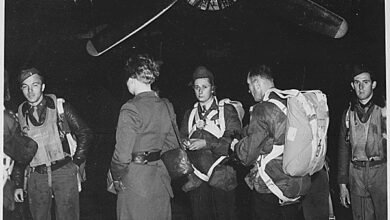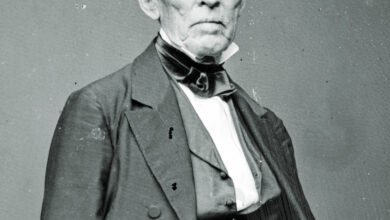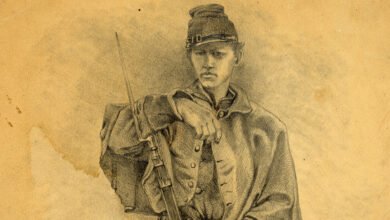
On June 6, 1944, over 160,000 Allied troops were sent to cross the English Channel onto the beaches of Normandy, France — the D-Day invasion that marked the assault on Western Europe. Yet the operation, dubbed Operation Overlord, almost ended in disaster before it even began. That it succeeded was thanks to one Irishwoman, Maureen Sweeney, who passed away at the age of 100 this past week.
Her story begins at a post office in Blacksod Bay, County Mayo, on Ireland’s west coast, which doubled as a weather station. Sweeney and her husband were tasked with taking hourly barometer readings night and day in the lead-up to the Allied invasion of Normandy, according to the BBC.
Despite Ireland’s official neutrality during World War II, information gathered by the Irish Meteorological Service was covertly shared with the Allies.
At 1 a.m. on June 3, 1944, the 21-year-old noticed a drop in barometric pressure over the Atlantic — a sure sign of a gathering storm. Since the outbreak of World War II, Sweeney and her husband had been reporting the weather to the Irish Met Service in Dublin every hour, every day, every year.
Like normal, her report was sent to the Irish Met Service in Dublin but this time, unbeknownst to Sweeney, on to the Supreme Allied Commander, Dwight D. Eisenhower.
The report set about a series of agonizing decisions for Eisenhower and the Allied staff.
Only a small window — nine days in May and June — was suitable for the invasion. Eisenhower had originally set the date for the invasion to be June 5th.
According to the U.S. Department of Defense, “The days needed to be long for maximum air power usage; a near-full moon was needed to help guide ships and airborne troops; and the tides had to be strong enough to expose beach obstacles at low tide and float supply-filled landing vehicles far onto the beach during high tide. H-Hour was also crucial in that it relied on those tides to be rising at that time. There also had to be an hour of daylight just beforehand for bombardment accuracy.”
Sweeney’s intel proved correct and a storm broke over the English Channel on June 5th. However, further postponement would have meant a two-week delay. Group Captain James Stagg, Eisenhower’s chief meteorologist, predicted a temporary break in the weather. Eisenhower made the decision to go on June 6th just before dawn 24 hours prior.
The ensuing action — the largest amphibious operation in human history — was the first of many in the fight to liberate Western Europe from Hitler’s grasp.
Yet it was thanks to Sweeney and her 1 a.m. report that the largest amphibious operation in human history was postponed, undoubtedly saving countless lives in the process.
Sweeney ultimately ran the very same post office where she made that fateful report until her retirement in the 2000s.
In 2021, Sweeney was awarded a special U.S. House of Representatives honor for her wartime contributions, with her son, Vincent Sweeney, stating that his mother “was proud of the dispatch’s influence, but primarily ‘happy that she got it right.’”
historynet magazines
Our 9 best-selling history titles feature in-depth storytelling and iconic imagery to engage and inform on the people, the wars, and the events that shaped America and the world.

Source link




